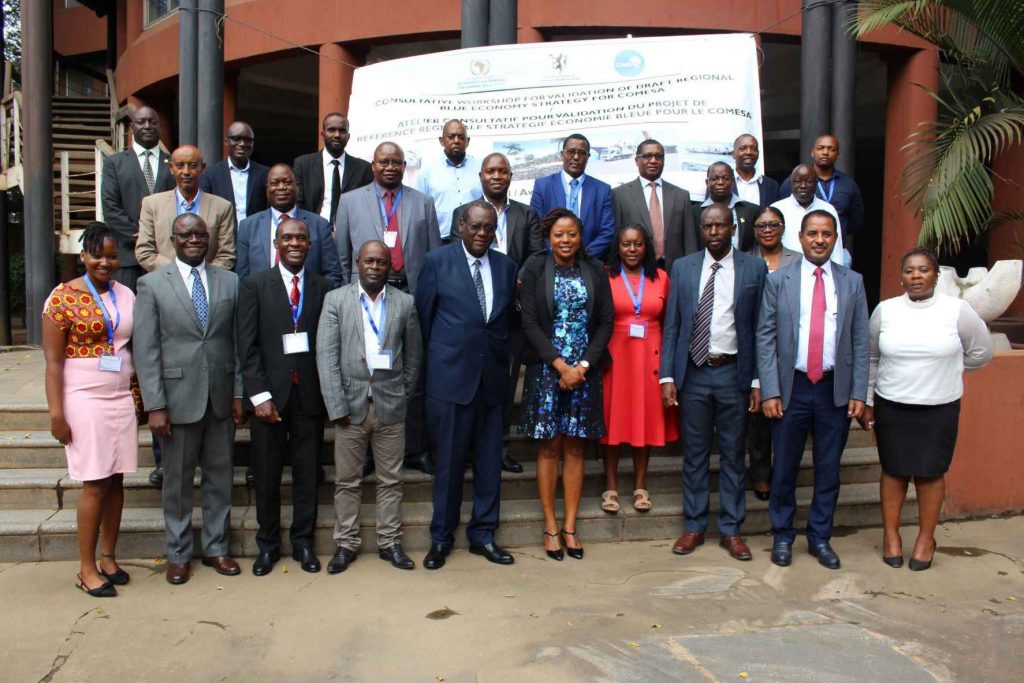
COMESA has developed a draft strategy to harness the benefits of the Blue Economy for its 21 Member States. The draft strategy was presented to delegates from the Members States on 26-27 April 2022 in Lusaka, Zambia, where it was reviewed and validated.
The concept of the Blue Economy has been embraced by the COMESA Member States as a mechanism to realize sustainable ocean-based economic development. Currently, there is limited information on the Blue Economy as the focus has been primarily on land-based economic development or on conservation rather than on the sustainable use of the investment in an ocean-based economy, for national benefit.
“An integrated approach to ocean-based and inland water development, which brings together economy, environment and society is crucial,” said the COMESA Assistant Secretary General, Dr Kipyego Cheluget when he addressed the delegates.
He added that COMESA Member States had recognized that regional integration without a deliberate targeting of interventions on the Blue Economy would not yield an all-inclusive developmental result.
Under the Blue economy initiative, the regional bloc will support its members towards improving production and trade of fish and fisheries products; increasing contribution of tourism to economic growth in COMESA; improving shipping/transportation, trade, ports; sustainable energy and mineral resources and innovative industries; and improved management of natural resources.
Director for Sustainable Environment and Blue Economy at the African Union Commission Mr. Harsen Nyambe Nyambe stated that despite the recognition that Africa’s oceans are some of the richest environmental resources in the world, there remains a low consideration of their importance as a source of income towards the growth of African economies.
“There is an urgent need to invest in the management of African oceans if the momentum of a blue or ocean economy is to be harnessed in a sustainable manner to contribute to national economies and the conservation of ecosystems and the marine environment,” he said in a speech presented by Ms. Linda Oje Etta.
According to the AU, two thirds of Africa are coastal and island states, with jurisdiction over 13 million square km of marine territory including approximately 6.5 million square km of continental shelf. Further, 65% of the African continent is covered with a network of rivers, lakes, aquifers and other freshwater sources.
The Blue Economy seeks to protect these fragile aquatic resources, while advancing the sustainable development of sectors which hinge upon them. Thus, the development of Blue Economy strategy will guide the implementation of an appropriate intervention to maximize the benefit from marine, inland and underground water resources.
The formulation of COMESA Blue Economy Strategy was financially supported by the the Kingdom of Norway through the African Union Inter-African Bureau for Animal Resources (AU-IBAR).
The AU-IBAR Director Dr. Nick Nwankpa noted that COMESA was one of the first beneficiary institutions of this support among regional economic communities. He was represented by Dr Admore Chakandenga.

